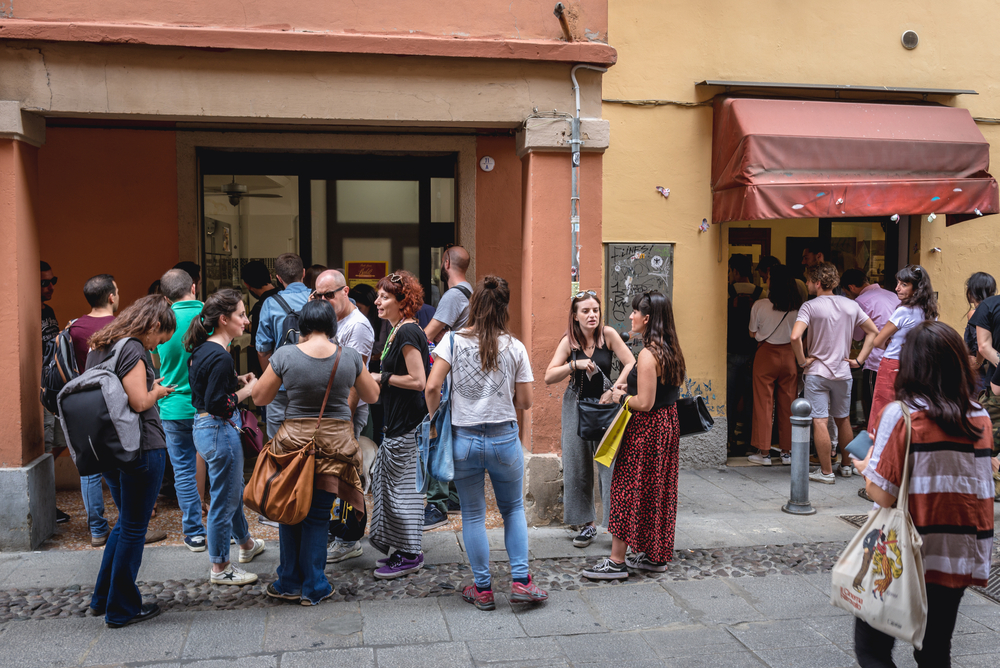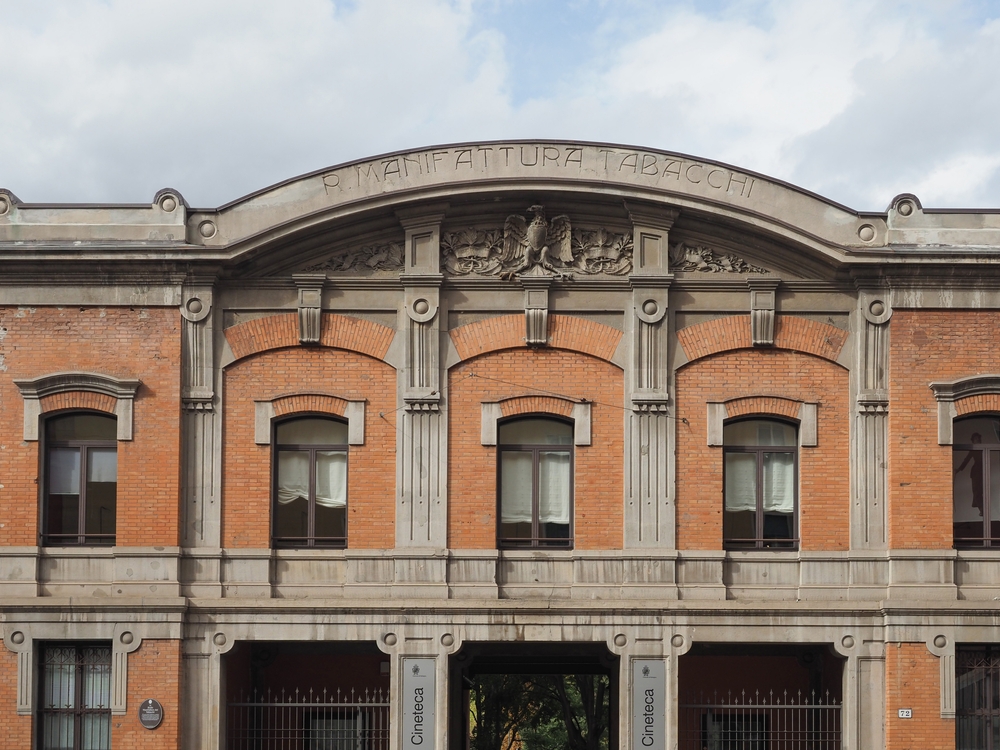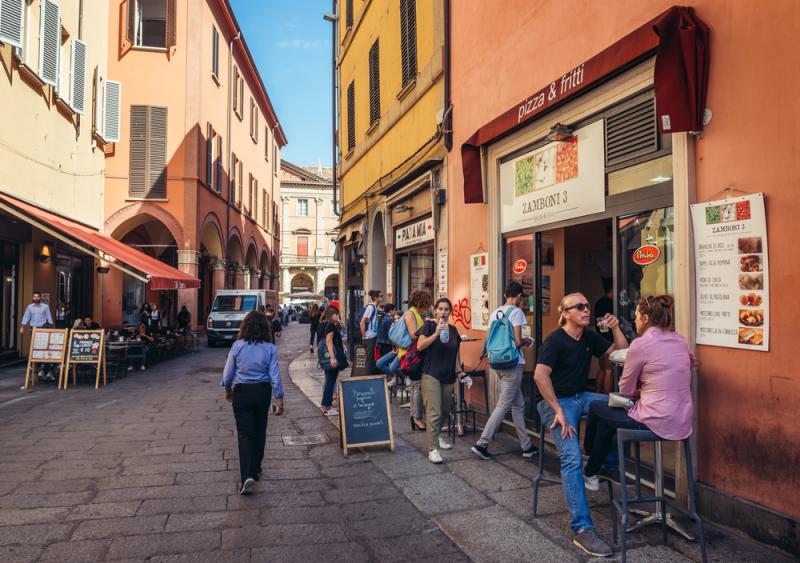Bologna is known to the rest of Italy and to the wider world as the Fat City, the Learned City, the Red City — respectively for its exceptional food culture, its still-thriving 11th-century university and the striking red of its medieval rooftops and towers, as well as its historical political leanings. Bologna’s become better known to travelers as the years go by; in fact, just one month ago, CNBC boldly proclaimed it “the number one most underrated city in the world.” But this sweeping statement risks diminishing the complexity of Bologna’s character — one written into its trio of nicknames.
As a day-tripper, it’s easy to get swept into the broad, pedestrianized shopping streets, full of people languidly heading between main drags of Via dell’Indipendenza and Via Rizzoli. But if, in the daytime, Bologna’s UNESCO-classified web of porticoes can cast certain streets into the shadows, in the evenings, those same stretches are lit up into oranges, yellows and pinks, bringing a second wind of activity.
Beyond the main sites, Bologna has areas largely unknown to many visitors. Like the shifting light beneath the porticoes, each of these areas casts a new perspective on this lively city.
Here are five alternative streets (with complementary surrounding areas) for five new ways of experiencing Bologna.
Live like a bohemian student in Via Zamboni
A vibrant street all but synonymous with the university quarter where it lives, Via Zamboni begins at the prominent Two Towers and spirals out in apericena bars and street food vendors toward the hub of Piazza Verdi. Layout-wise, Piazza Verdi feels something like a condensed, Bolognese equivalent of Rome’s Piazza del Popolo: twin cafés face each other with an open square between them. But Piazza Verdi is distinctly Bolognese, characterized by two sprawling student hangouts — Scuderia and the university bar — across from which the Teatro Comunale streams out lyric opera and symphonic music, often over the heads of sun-basking students on its steps.
Further down Via Zamboni, groups gather and chat under the porticoes between classes, with some of them breaking off for quick coffees at go-to spots just five minutes away. Follow their lead and try the relaxed outdoor seating of Café Rubik (Via Marsala 31d) with its retro bar made from stacked cassette tapes, or the Caffè Terzi (Via Oberdan 10d). The latter is a more sophisticated affair with pastries and delicate cookies, and its coffee is often cited as the best in the city. A standing macchiato in either spot will see you there and back to class in 15 minutes.
In addition to coffee and the pick of affordable pizza — often enjoyed student-style in the street — this district also holds some of Bologna’s finest independent bookshops. La Confraternita dell’Uva (The Grape Brotherhood) and Modo Infoshop are both hubs for readings, literary events and gatherings, but welcome unhurried perusal. Modo Infoshop is a mainstay of student nightlife by virtue of its connecting bar, which spills out onto Via Mascarella. It’s also just a few feet from Bologna’s best-known jazz club, Cantina Bentivoglio.
Dwell on the past in Piazza and Via Santo Stefano

For the picturesque face of Bologna not too far from Piazza Maggiore, try Piazza Santo Stefano, home to the spectacular homonymous basilica known colloquially as the Seven Churches of Bologna, for its hybrid architectural styles reflecting diverse construction periods. The Seven Churches’ origins are debated but generally point to San Petronio’s wish to recreate Jerusalem’s Holy Sepulchre on the ruins of a pagan temple.
The undeniably elegant square is really more of a triangle,opening up via cobbled pathways and a friendly gathering of café tables. For this reason, it is best approached from the Quadrilatero, Bologna’s market-style food district, although the journey has its own offerings: Pasticceria Santo Stefano (Via Santo Stefano 3a) is always buzzing with locals sampling its mignon cakes, while Vineria Favalli (Via Santo Stefano 5a) has a substantial offering of local wines and artisanal piadine.
The square itself is a sight to take in slowly, perhaps over your first plate of lasagne al verde. On the second weekend of every month, it also hosts the city’s antique market, a tasteful selection of furniture, paintings, vintage film posters and jewelry. For a gelato while you browse, try one of the renowned gelato shops in the area: Cremeria Santo Stefano (Via Santo Stefano 70c) or Cremeria la Vecchia Stalla (Via Santo Stefano 14a).
Post-market, follow the gentle curve of Via Santo Stefano out of the city to explore the leafy Giardini Margherita (Viale Giovanni Gozzadini).
Slow down on the southern Via Rialto
I never understood why Via Rialto feels so special in such an already-evocative city until a friend and longtime resident of Bologna pointed it out: “I like it so much because, look, it doesn’t have any porticoes,” he told me.
I discovered this quiet southern street in the first days of winter, and it was all the more magical in the pale pinks and soft blues of a fading sun, free of the porticoes I had by then come to expect. The resulting scene is almost bucolic. Its few businesses have a similarly calming quality: the tiny Cinema Rialto, plus a series of nondescript ceramics and vintage shops, interior design boutiques and artisanal alimentari all lead up to the nearest city gate, Porta Castiglione. To the south, a row of residential homes opens up to the hills and the gardens at Villa Ghigi.
A short street, Via Rialto nevertheless has several memorable restaurants and bars. A top choice for Sunday lunch with friends is Antica Osteria Romagnola (Via Rialto 13a). For a change of pace from the usual Bolognese fare, organic Fram Bistrot (Via Rialto 22) offers lovingly prepared vegan dishes and ambient music, while laid-back bar Rude (Via Rialto 10a) is a local favorite for aperitivo (often hams and cheeses, paired with an evening drink).
Delight in Bologna’s signature dishes on Via del Pratello

West of Via Rizzoli, Via del Pratello and the surrounding area is without a doubt one of Bologna’s gastronomic highlights. The city’s itinerant organic market often sets up on Via del Pratello’s tail end.
For excellent Bolognese cooking in a traditional setting, Trattoria Baraldi is a go-to. But for a particularly memorable meal, walk the four minutes to Da Me (Via San Felice 50a), where recipes from the chef’s father’s restaurant are revived for a new generation, and served alongside curiosities like gelato al formaggio (cheese ice cream) – savory, served with fig jam and walnut crackers and, yes, eaten as an antipasto.
The whole neighborhood is a close-knit community where everybody knows each other, and news gets around fast. Be sure to stick to prescribed lunch and dinner hours (about 1pm for lunch and 8pm forward for dinner) as you won’t find tourist-targeted orario continuato type places (with nonstop hours and always-open kitchens) in the area.
After dark, many locals like to head to Via del Pratello and the surroundings for a night out, but during the daytime, it’s also worth seeking out for its street art scene.
See how the city’s evolving on Via Riva di Reno

To see something of the spread-out, often more industrial north, exit from Indipendenza and head down Via Riva di Reno, perhaps stopping off at Mister Coffee Bistrò (Via Riva di Reno 65m) where specialty coffee is delivered with a contemporary twist, yet with as much care as older failsafes Zanarini (Piazza Galvani 1) and Gamberini (Via Ugo Bassi 12).
The Cineteca of Bologna (Via Riva di Reno 72), a cinema foundation and restoration center, are found at the end of this street, where posters of director Federico Fellini and actor Marcello Mastroianni dressed in formal attire welcome you into the courtyard of its main theater, Cinema Lumière. A weekly farmer’s market, Mercato Ritrovato, is held here on Monday evenings in the summer (June to August) and on Saturday mornings in other periods of the year. But Sunday matinées at the Cineteca are the preferred activity on non-market days, and your ticket comes with a morning pastry from the modern bakery Forno Brisa.
Through a pair of gates, next to the cinema, the flat, almost sparse, architectural style of Park 11 September is a perfect representation of this part of the city. You’ll find another great cultural institution, the MAMbo (Bologna’s Museum of Modern Art) with a permanent collection of Bolognese painter Giorgio Morandi and frequent contemporary exhibitions. Also in the area is the landmark Cassero, one of the first LGBTQ spaces in Italy which now acts doubly as a cultural center and a festive setting, with parties held in its massive courtyard.
Best experienced outdoors and in shared spaces, the whole neighborhood prides itself on representing the avant-garde in a city built on the strength of many intersecting centuries.








